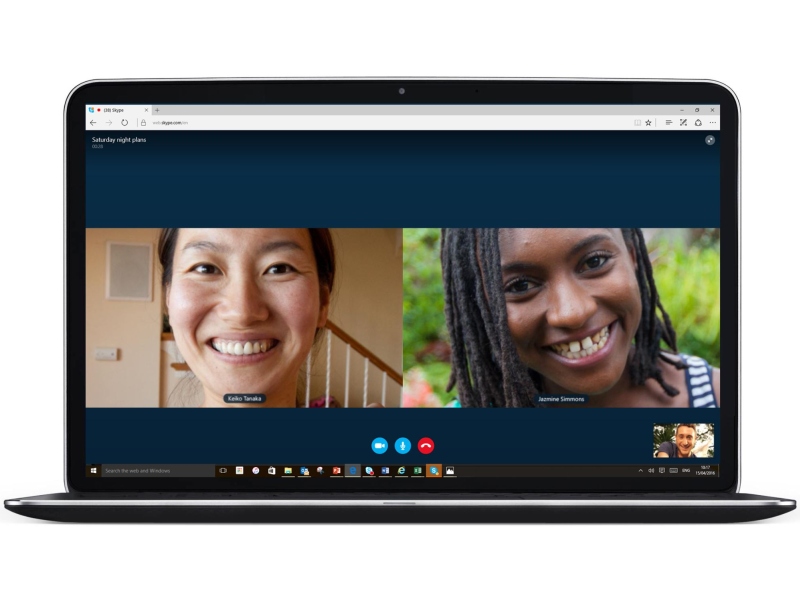- Home
- Internet
- Internet News
- Skype for Web No Longer Requires Plugins for Voice, Video Calling
Skype for Web No Longer Requires Plugins for Voice, Video Calling

Microsoft's Skype on Friday announced that Skype for Web no longer requires plugins to work. The company is now rolling out Skype for Web to preview users, and hopes to complete the rollout to the general public by the end of this month.
Skype for Web without plugins is based on WebRTC standard, and initially this version will only work with Microsoft's Edge browser for Windows 10 via the ORTC media engine. In the future however, once Chrome (and its Chromium-based variants) and Firefox support the H.264 codec, Skype for Web will work on those browsers as well as without plugins.
The version of Skype for Web without plugins will be accessible via the dedicated site, Outlook.com, Office Online, and OneDrive.
For now, some features still require plugins to work. While Skype for Web now allows voice calling, video calling, and group versions of the two without plugins, features like screen sharing and calling landlines/ mobiles still require plugins to work.
Notably, it was only last month that Skype for Web gained calling functionality to landlines and mobiles. Alongside, the company introduced support for in-line YouTube video previews, and allowed users to add people to chats even if they do not have a Skype account.
The company on its blog notes that Skype for Web without plugins for one-to-one calls and group calling works to and from Microsoft Edge browsers. It also works with one-to-one calls from the Edge browser to Skype for Windows/ Mac usersFor the latest tech news and reviews, follow Gadgets 360 on X, Facebook, WhatsApp, Threads and Google News. For the latest videos on gadgets and tech, subscribe to our YouTube channel. If you want to know everything about top influencers, follow our in-house Who'sThat360 on Instagram and YouTube.
Related Stories
- Samsung Galaxy Unpacked 2025
- ChatGPT
- Redmi Note 14 Pro+
- iPhone 16
- Apple Vision Pro
- Oneplus 12
- OnePlus Nord CE 3 Lite 5G
- iPhone 13
- Xiaomi 14 Pro
- Oppo Find N3
- Tecno Spark Go (2023)
- Realme V30
- Best Phones Under 25000
- Samsung Galaxy S24 Series
- Cryptocurrency
- iQoo 12
- Samsung Galaxy S24 Ultra
- Giottus
- Samsung Galaxy Z Flip 5
- Apple 'Scary Fast'
- Housefull 5
- GoPro Hero 12 Black Review
- Invincible Season 2
- JioGlass
- HD Ready TV
- Laptop Under 50000
- Smartwatch Under 10000
- Latest Mobile Phones
- Compare Phones
- Itel A95 5G
- Samsung Galaxy M56 5G
- HMD 150 Music
- HMD 130 Music
- Honor Power
- Honor GT
- Acer Super ZX Pro
- Acer Super ZX
- Asus ExpertBook P3 (P3405)
- Asus ExpertBook P1 (P1403)
- Moto Pad 60 Pro
- Samsung Galaxy Tab Active 5 Pro
- Oppo Watch X2 Mini
- Garmin Instinct 3 Solar
- Xiaomi X Pro QLED 2025 (43-Inch)
- Xiaomi X Pro QLED 2025 (55-Inch)
- Nintendo Switch 2
- Sony PlayStation 5 Pro
- Whirlpool 1.5 Ton 3 Star Inverter Split AC (SAI18K38DC0)
- Whirlpool 1.5 Ton 5 Star Inverter Split AC (SAI17B54SED0)

















